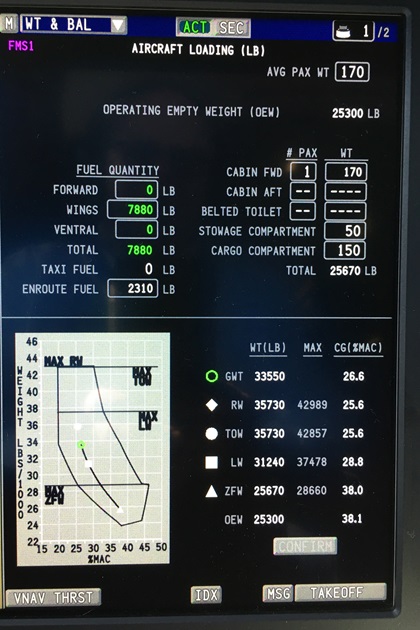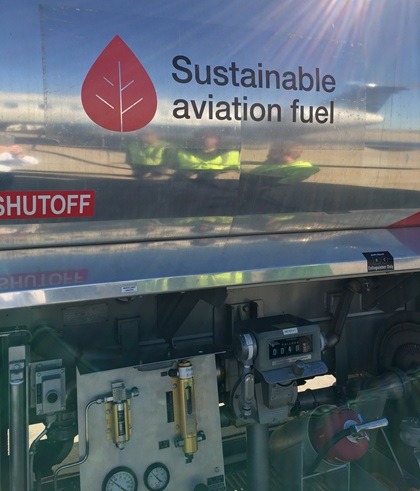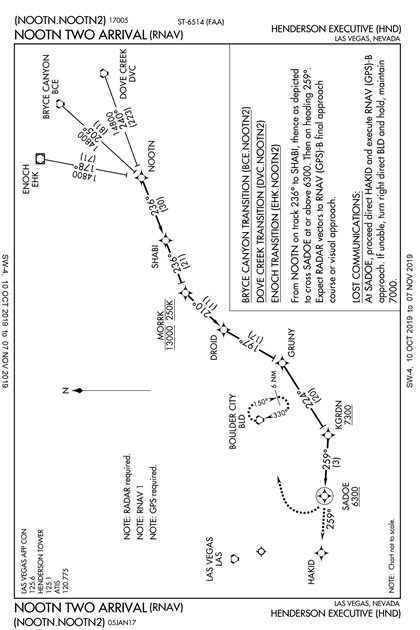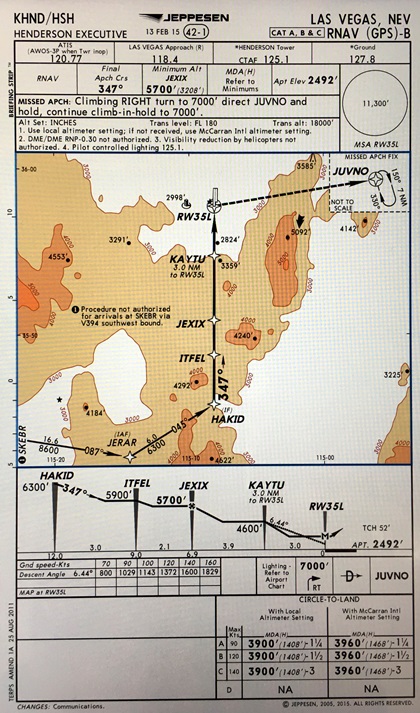Vegas bound
Arriving in style at big-iron central
It’s always a thrill to actually fly yourself to a big airshow or convention. It’s kind of a bucket-list item. So it was a special experience to fly myself to this year’s intricately named National Business Aviation Association—Business Aviation and Convention Exhibition (NBAA-BACE) in Las Vegas. After decades of airlining it into Sin City, my luck changed. I was offered the opportunity to fly an Embraer Praetor 600, and, of course, I jumped at it.

October 19 dawned with rain and offshore thunderstorms at Embraer’s U.S. home base at the Melbourne International Airport in Florida. My wakeup was at Oh-dark-30 and lightning was flashing to the east as I arrived at Embraer flight operations. There, I met my right-seaters, Colby Wilson and Pierce Brooks. Their patient souls and deep willingness to answer many questions would be seriously tried over the next 5.5 hours.
It didn’t take long to fire up the APU, load up N602EE, run through the preflight checks, set up the Collins Aerospace Pro Line Fusion panel—OK, that took a little time—and taxi out to Melbourne’s Runway 9L. I won’t lie, my steering during the taxi was a tad jerky owing to my lapsed familiarity and the ship’s fine-tuned, responsive brake-by-wire system. I earned a type rating in Embraer’s Legacy 500—the Praetor 600’s predecessor, with which it shares a type rating—back in 2017. But flying a big jet like this hasn’t exactly been a daily experience for me. For Wilson and Brooks, it’s their jobs. Lucky devils.
Check takeoff configuration (push a button and a lady’s voice says “takeoff OK,” if it’s so), line up, hold the brakes, turn on the autothrottle system, bring up the thrust levers halfway, let the autothrottle take them all the way to takeoff power, release the brakes—and hang on. After a brief pause, we’re shooting down the runway and in seconds the check thrust; 80 knots airspeed alive; V1 rotate; and positive rate, gear up calls came and went. Now I’m pitched up 20 degrees and heading for the initial climb speed of 180 KIAS. At 400 feet agl, it was time for Wilson to run the climb sequence and after-takeoff sequence: Select 180 knots, vertical speed mode (for a 3,000-fpm climb), check climb power, flaps zero, and auto pilot-engage.

We climbed to FL280 in 14 minutes, passing through some of Tropical Storm Nestor’s bumpy, rainy clouds. By Atlanta we were on top at FL450 and looking at a groundspeed of 445 knots. Two hours, 50 minutes later, I’m flying down final at the Salina Regional Airport in Kansas. At 30 feet above the threshold the autothrottle went to idle and I rolled it on.
We’re at Salina because that’s one of the places that sells sustainable aviation fuel (SAF). Other convention-bound jets also landed there that day, in solidarity toward a reduced carbon footprint and lower emissions. We took on 800 gallons of SAF, which would give us more than enough to get to Las Vegas’ Henderson Executive Airport.
If you’re like me, you think of carbon-friendly fuel as originating from plants like switchgrass or sugar cane. How wrong can you be? I grabbed an SAF brochure at the FBO and the SAF Coalition describes it as blend of Jet A and Jet A1 fuels and one of the following five synthetic-fuel blending agents:
- Fischer-Tropf synthesized isoparafinnic kerosene
- Hydroprocessed fatty acid esters and fatty acids
- Synthesized isoparaffins
- Fischer-Tropf synthesized kerosene with aromatics
- Alcohol-to-jet
See any plants in there? Me neither, but what do you expect? I took a second language in order to bypass a usually mandatory chemistry/physics track in school. But the important thing is that SAF mixes with Jet A or Jet A1 fuel, and special approval isn’t necessary to use it. As for carbon dioxide emissions, the SAF Coalition says that a jet flying 1,000 nautical miles could produce 22,787 pounds of CO2. Using a mixture of 30 percent SAF blending agent and 70 percent Jet A, the same mission would reduce CO2 emissions by 4,100 pounds.

The quick-turn at Salina over, it was back to blasting off for Vegas. This time we flew at FL400. Unlike the Melbourne-to-Salina route, the home stretch featured 80-knot headwinds. Even so, it wasn’t long before we were descending to 13,000 feet, then 8,000 feet, then 6,000 feet for the arrival into Henderson Executive. We used the NOOTN 2 RNAV arrival route from the northeast. As with the rest of the trip, all of the power, pitch, and course-tracking actions during climbs, descents, and cruise were handled automatically by the Pro Line Fusion avionics suite. Of course, you must know how to program the system. Going into a discussion of just one function in the VNAV thrust page could merit a small book, so I’m not going to even attempt it here. That’ll have to come later, when the Praetor 600 flight review appears in the Turbine Pilot edition of AOPA Pilot.
Now for a philosophical question. Who in the world would build a runway that’s perfectly aligned with a 3,359-foot-high hill just three miles from the runway threshold? Whoever designed Henderson Executive, that’s who.
That hill is right on the final approach course to runways 35L and 35R, and when you do the stepdowns you hit the Kaytu fix and then make a steep dive for the runways. Brooks kept pushing the terrain-warning-inhibit button so that the cockpit wouldn’t be filled with the nerve-wracking “Terrain….Pull up” voice warnings. You get a hint of the vertical guidance issues you face when you check the comments section in ForeFlight’s A/FD: “Runway 35R visual glide slope indicators: PAPI does not provide obstacle clearance beyond 3.5 nm from threshold, unusable beyond 3.5 nm.” Good thing it’s nearly always CAVU in Las Vegas.

After a brief leveloff after passing the hill to clear another, 2,824-foot obstacle, we decelerated to our 113-knot VREF and I made a decent landing. The flight log showed it was two hours, 31 minutes since we left Salina.
I was expecting a huge crowd of jets waiting to be towed to their static display locations, but no. All were parked in neat rows. The display airplanes—the Praetor 600 among them—would be towed to their static lines on Sunday. There was a jumble of trucks, cranes, and girders north of the FBO as the very-limited-access display area was coming to life. Over at the Gulfstream area what appeared to be a large stage was under construction. Whatever could that signify? The rumor mill has been churning out yarns about a new Gulfstream in the offing. The rumor will be confirmed or denied by Sunday night…or so I hear!
Flying into an NBAA-BACE airport can’t be compared to the drama of an EAA AirVenture arrival. There’s no Fisk arrival, with its route taking you over a railroad in an often-unruly line filled with airplanes of every description, all listening to controllers’ coaching before being handed off to a tower frequency for landing. No flying around Rush Lake in a sort of “penalty box” when too many airplanes converge too fast. No spot landings on yellow or green dots on the runway. Instead, NBAA arrivals tend to be very controlled affairs. Everyone is on an IFR flight plan, and every flight depends on the one before it. So as with Oshkosh arrivals, the pressure is on. NBAA caters to the turbine crowd, and that means all arriving and departing pilots are assumed to have high levels of proficiency. I’m sure that most pilots coming up on final are silently wishing to the Lord—like the astronauts in Tom Wolfe’s The Right Stuff —to “please don’t let me %&*$ up” lest they be judged as inferior.
I know I was. Maybe there’s not so much difference between an Oshkosh and an NBAA arrival after all.




